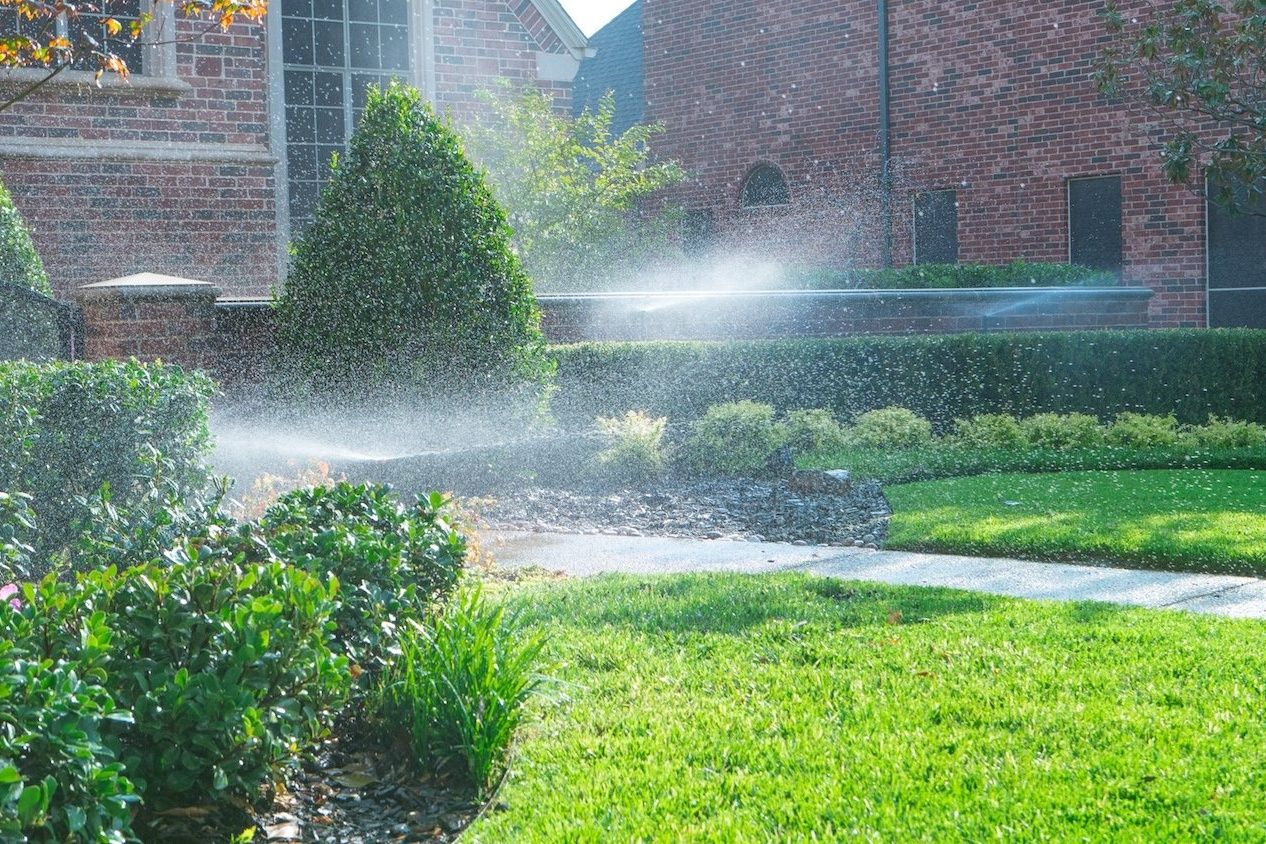
Here in North Texas, where water is such a precious commodity, we often think about the problems associated with a lack of water. Drought can definitely take a toll on lawns and landscapes.
But the truth is, overwatering grass and trees also happens and can be problematic.
Overwatering can sometimes occur to attempt to compensate for drought conditions but this can be counterproductive and even damaging to the lawn and landscape. Or, sometimes, homeowners misdiagnose a concern (like disease or pest damage) as drought and they water when it’s not really needed.
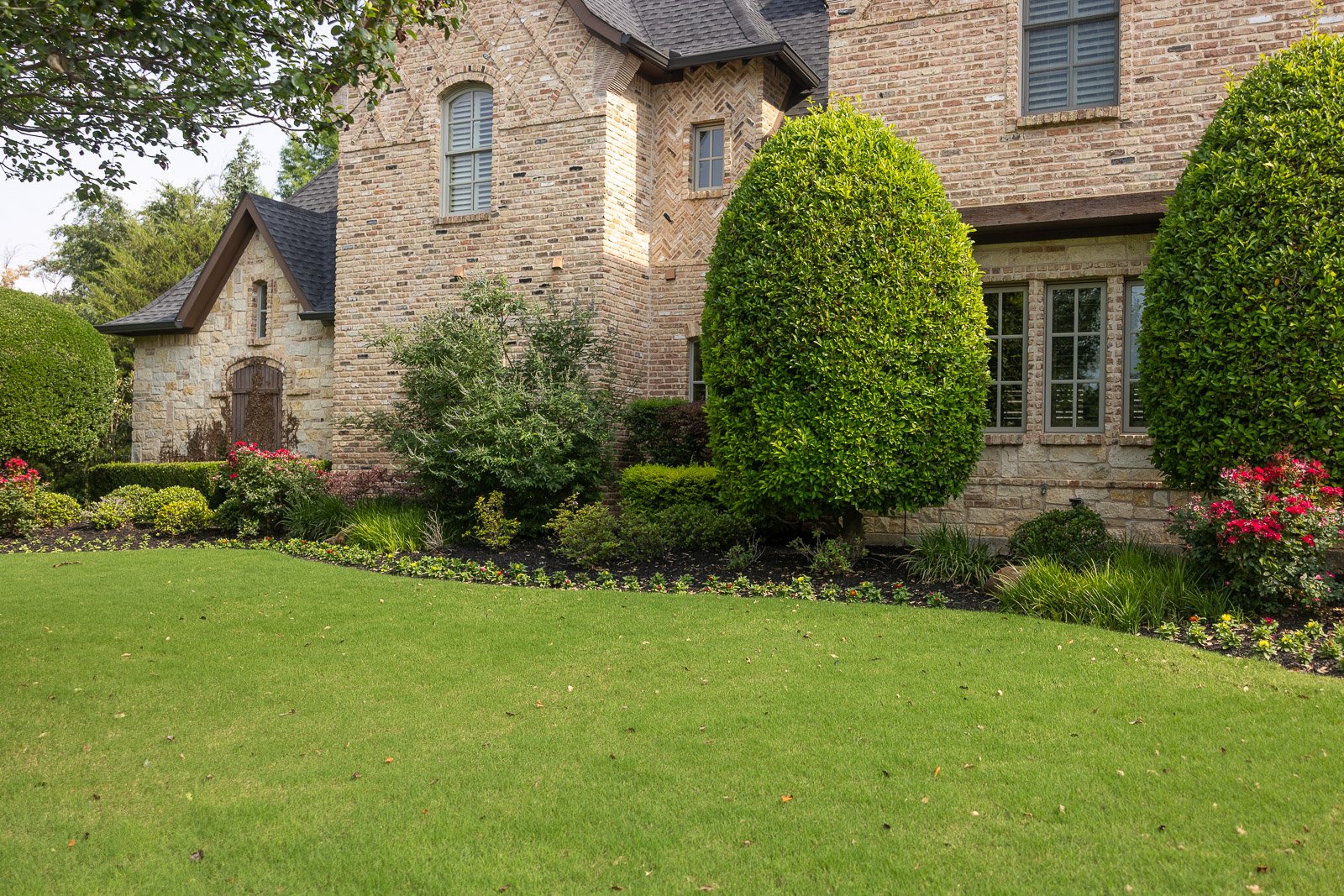
In this article, we’ll dive into some of the signs of overwatering a lawn or landscape.
Jump to:
Yes, you can overwater your grass. While it’s true that water is the lifeblood of all living things and it is needed to survive, it’s also true that too much of it can be harmful rather than helpful.
Plants growing in soil that is too wet suffer from a lack of oxygen which leads to the death of roots and a loss of vigor in the plant. When you water well-beyond your plants’ needs, essentially, you are drowning it. This is true for grass, trees, shrubs, and small plants. Too much water can be harmful.
When a lawn is overwatered, it can also cause the root system to grow shallow. This is not optimal for a healthy lawn. You want the roots to grow deep.
In addition, it’s not uncommon for an overwatered lawn to start to have unhealthy characteristics including excessive thatch, disease, and pest problems.
While an irrigation system is meant to remove the guesswork out of watering and prevent problems like these, a malfunction in the system can be the cause of too much water in the first place.
For example, it could be a leaky system that is putting out more water than it should be. In addition to potentially causing overwatering mistakes, it can’t be ignored that this is downright wasteful both from a cost perspective (literally sending money down the drain) but also from a responsible water utilization perspective. When water is as precious a commodity as it is here in Texas, we hate to see any of it wasted.
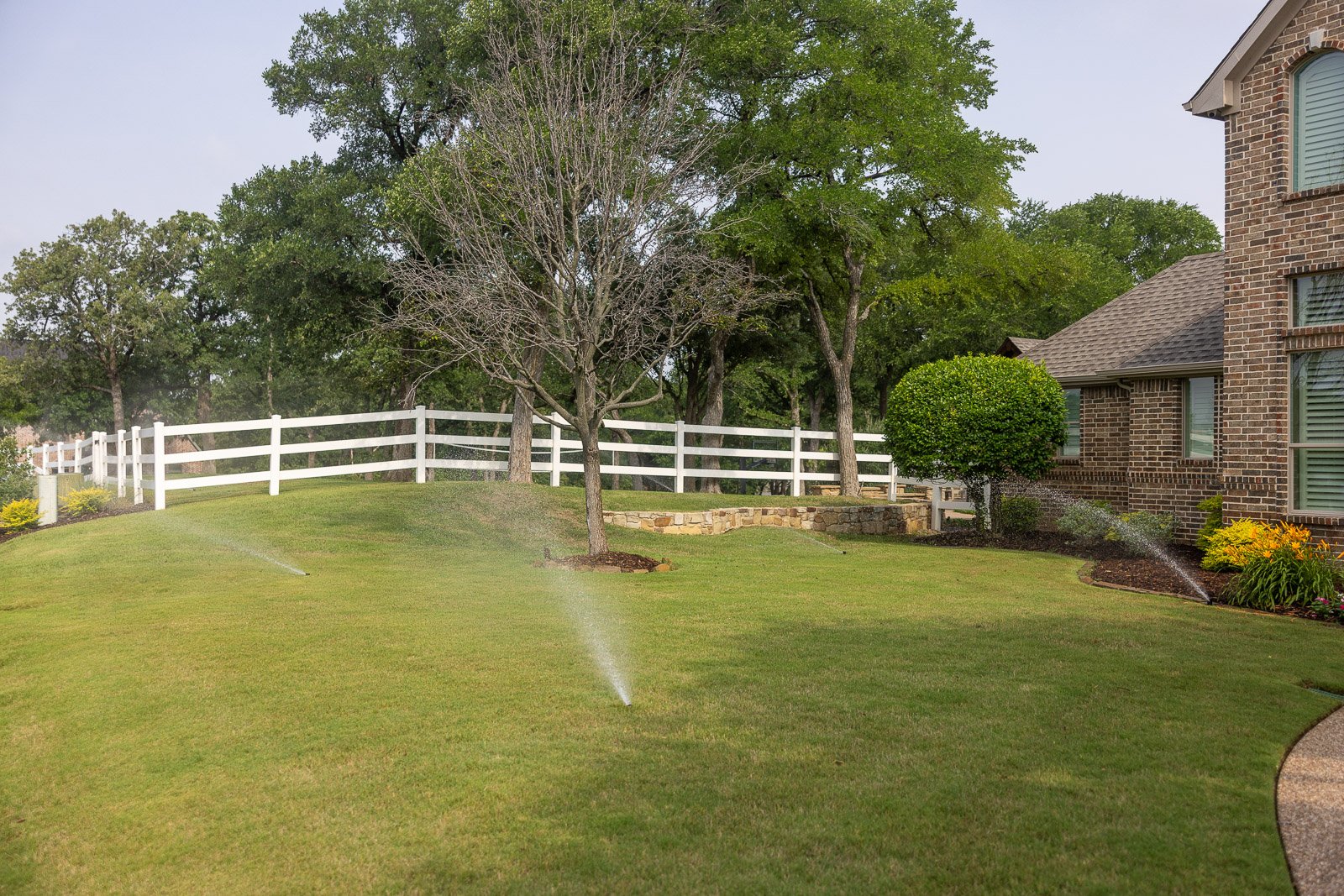
One of the first signs of overwatering a lawn is discoloration. Overwatered grass will turn yellow. You can tell a lawn is overwatered if it feels spongy. That secondary symptom is important as it can be confusing that drought-stricken grass can also turn yellow.
In fact, sometimes where things go awry is that homeowners see a lawn turning yellow (or even eventually brown) and they assume it needs water. You want to first look at those secondary symptoms. A lawn with too much water is usually squishy and you might notice runoff in hardscape areas.
A lawn that has too little water is going to have dry and cracked soil and won’t have that spongey feel.
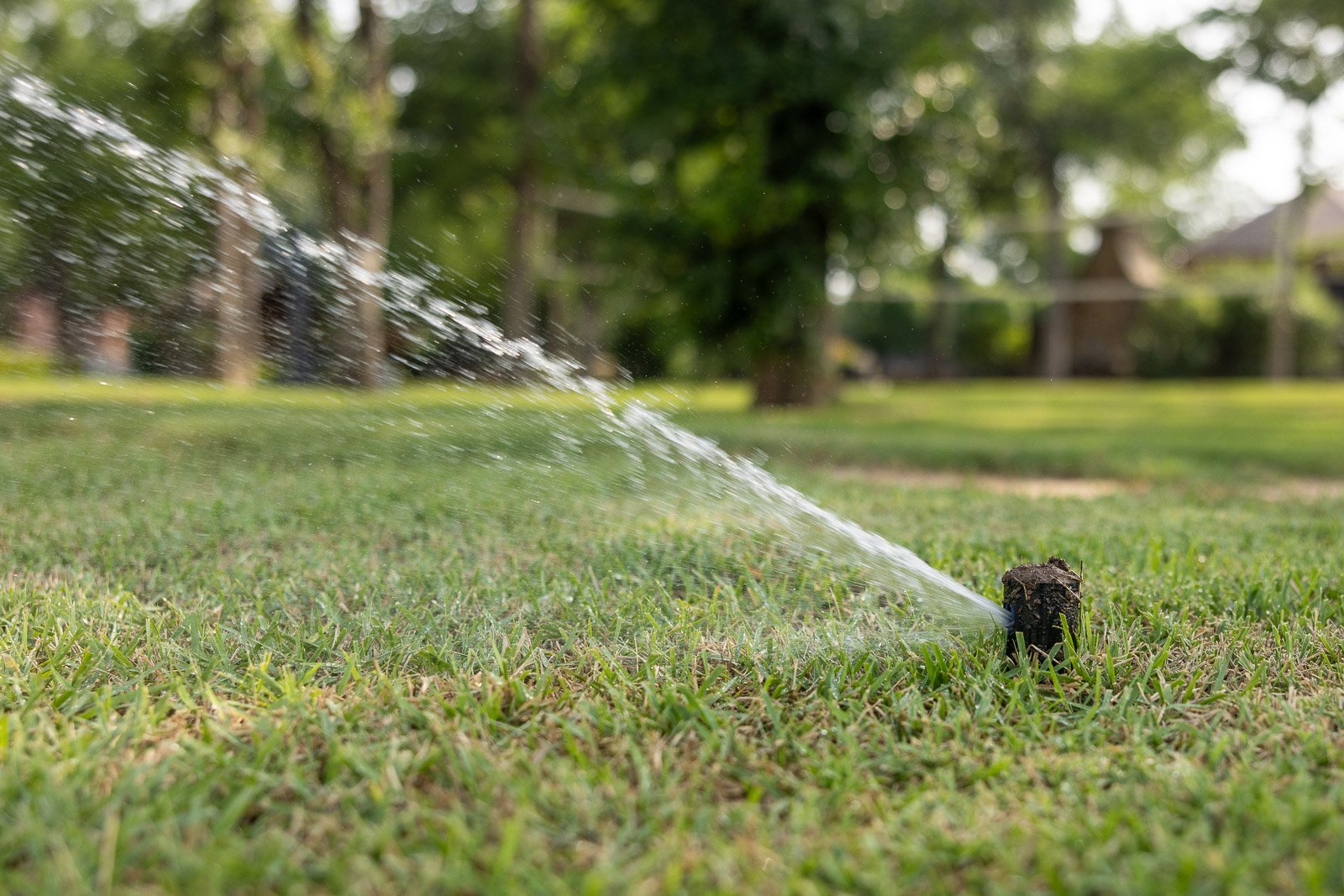
First and foremost, you need a proper diagnosis of what’s going on in your lawn. If you’re still not certain as to what’s causing the symptoms you’re seeing, you might need to talk to a lawn care professional.
If it’s determined your grass is overwatered, you immediately want to alter your watering habits.
We have an entire guide that we’ve put together on how to water your lawn. It’s important to know that grass in North Texas requires a minimum of one to two inches of water per week during the growing season.
If it’s determined that there’s a leak in your irrigation system that has led to this problem, you’ll obviously want to get that repaired. Regular irrigation audits can help identify leaks and prevent these types of issues.
In addition, if you now have a fungus problem or thatch build-up, you’ll also need to address those issues.
Unless your lawn is completely dead, it should bounce back with time.
Yes, just like you can overwater grass, you can absolutely also overapply water to trees and shrubs. Just like this can cause harm to your lawn, it can be bad for your landscape, too. You don’t want to drown your plant’s roots with too much water.
Again, this is not always a “hand-watering” problem but can be a landscape irrigation issue that needs addressing.
Overwatering trees and shrubs can happen in relation to the way in which irrigation systems are programmed for the landscaping. Each area of the landscape has its own specific needs. Turf has certain needs, trees have certain needs, and plants have certain needs. Even mature trees versus young trees have very different watering needs. And certain plant types can have varying needs based on species. Some plants are more drought-tolerant than others.
If your system is not set up for these nuances and everything is receiving the same amount of water, there could be problems.
But irrigation systems are set up in “zones” and sometimes the same zone that is watering some of the grass is also watering some of the plants. This can easily lead to unplanned or excessive overwatering of trees and shrub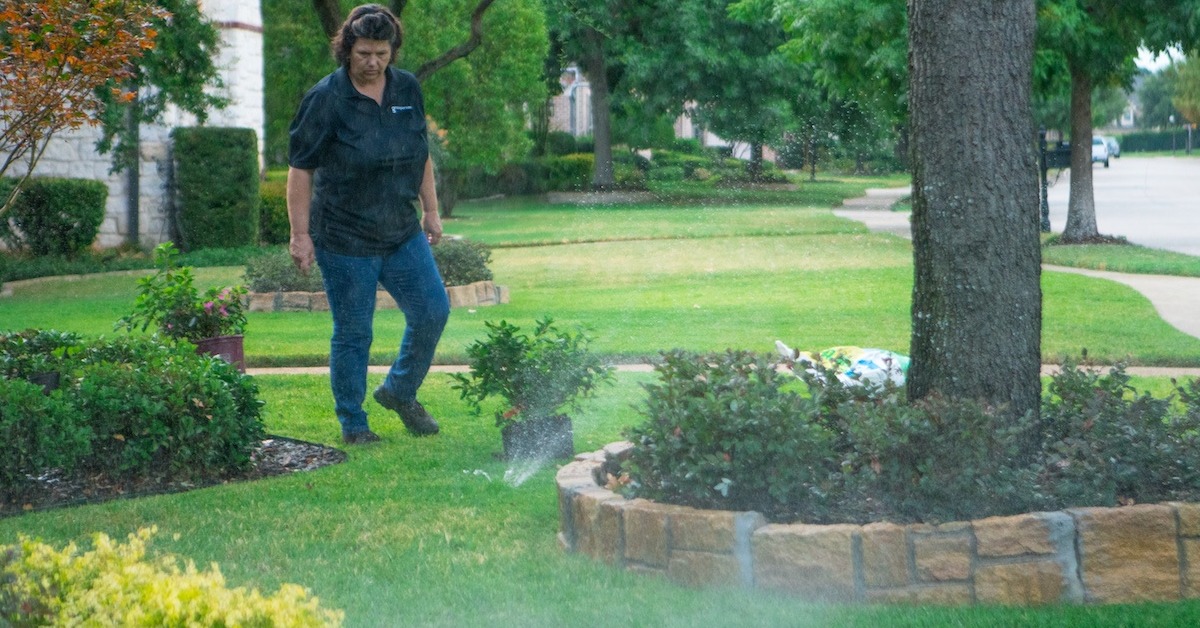
Plants growing in soil that is too wet suffer from a lack of oxygen which leads to the death of roots and a loss of vigor in the plant. When you water well-beyond your plants’ needs, essentially, you are drowning it. This can lead to stunted, slow growth and yellowing leaves.
Another sign of an overwatered tree can be within the soil itself. It will appear soggy, feel squishy, and might even have fungal growth, like mushrooms.
Unfortunately, because drought stress can also turn plants yellow, it’s not uncommon for homeowners to suspect that yellowing leaves must mean your trees or shrubs need MORE water. By ramping up the watering efforts on an already overwatered landscape, you can create even more problems and also leave your property prone to diseases.
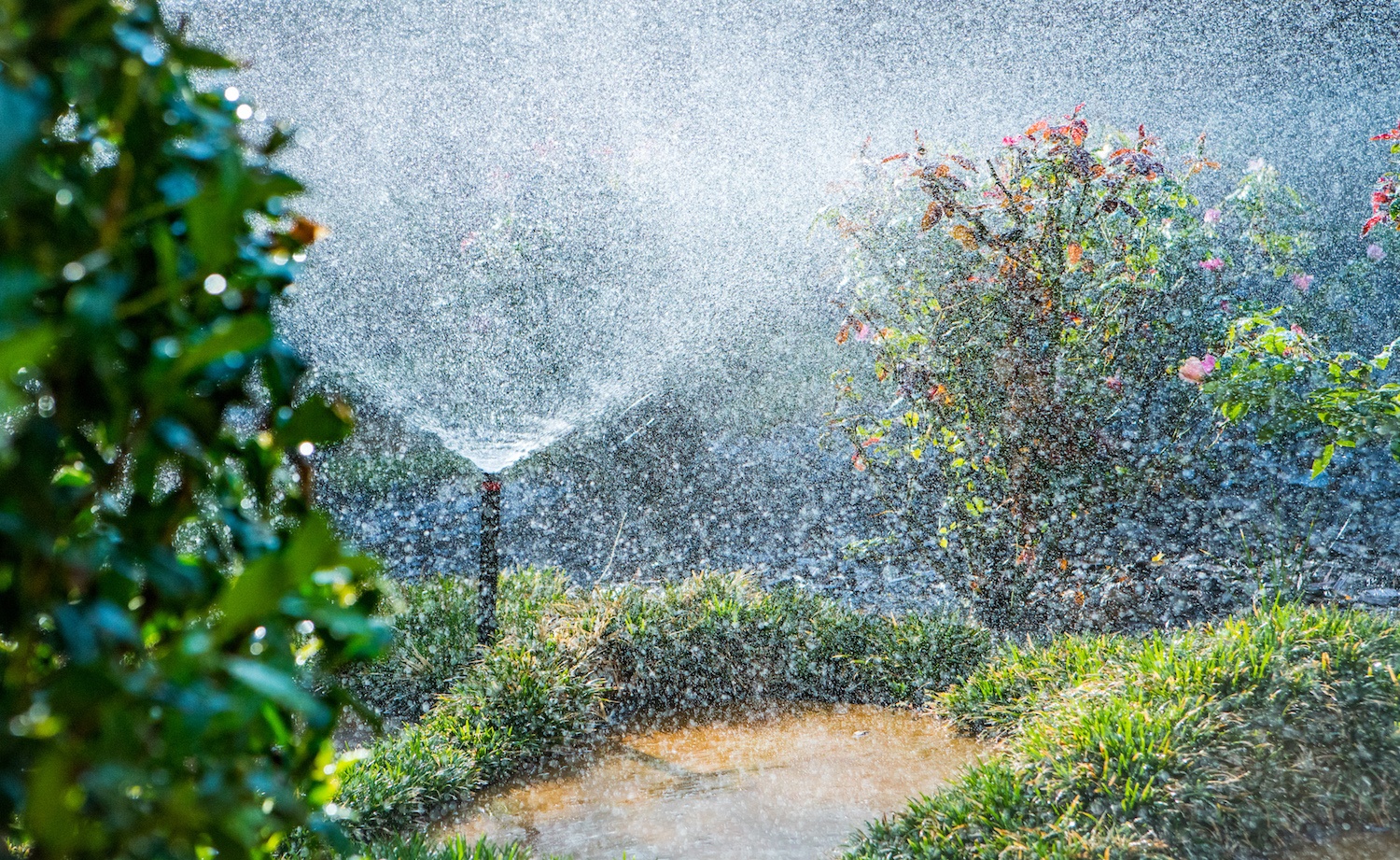
Again, just like with the lawn, you should first determine that “too much water” is truly your problem. If you are hand-watering your landscape, you’ll need to readjust your efforts. But if it’s an irrigation issue (as is often the problem), you might require an irrigation repair.
Sometimes, there’s a greater drainage issue at hand, such as compacted soil or even a gutter that empties into your plant bed. A professional should also be able to help you with these more complicated yard drainage issues.
The first step toward preventing overwatering is to identify the very specific watering needs of your property. We like to say that your property is like a “fingerprint” and its watering needs are going to be very unique to your property.
Even though a lot of neighborhoods do start out with similar landscaping, usually homeowners end up replacing trees, shrubs, and other plants over time. That means that your watering needs will even be different from your neighbors’.
Once the exact watering needs of your property (lawn and landscaped areas) are determined, then tweaks to your sprinkler system can be made in order to best meet your needs and prevent overwatering problems.
When it comes to optimal watering, it’s also important to consider smart irrigation technology that can ensure your property is getting what it needs. Today’s irrigation systems utilize weather-based (ET) and on-site rain/freeze sensors which can take the existing weather conditions into account. After all, what’s worse than seeing your sprinkler system kick on in the middle of a rain storm? It’s one of the worst ways to waste water.
This area of irrigation gets incredibly technical. ET, which stands for Evapotranspiration, is the sum of evaporation and transpiration. Understanding the ET rate of all of the plant material (and the turf) on your property is a complicated process but it’s necessary in understanding the exact watering needs of your lawn and landscape.
A professional can assist and in turn, help you to identify how effective your coverage is with your existing system. Is it adequate or do you need changes?
At Grassperson, we recommend at least bi-annual irrigation checks, in the spring and in the fall. In the spring, we’re making sure that everything looks good as we head into some of the hottest months (and likely drought conditions). We’re making tweaks where they’re needed and repairing anything that isn’t working correctly.
In the fall, we’re making sure that your system is set up for winter when your lawn and landscape needs are going to dramatically change again.
However, we also have plenty of clients who like us to come out for monthly checks during the growing season in order to ensure that everything is performing optimally. Given how vital the proper amount of water is, this gives our clients some peace of mind.
At Grassperson, these irrigation maintenance services are part of our Total Maintenance Package, which will cover many of your property maintenance needs. This will remove all of the hassle from your end.
If you’re worried that you have signs of overwatering a lawn or landscape, we are here to help. We can help identify what’s going on, get solutions in place, and get your property back on track.
Instead of worrying about irrigation and potential overwatering, you can leave it up to a pro who knows exactly what your Northern Texas property needs. Get a Free Quote, then you can enjoy the best lawn and landscape on the block!
These Stories on Lawn Care